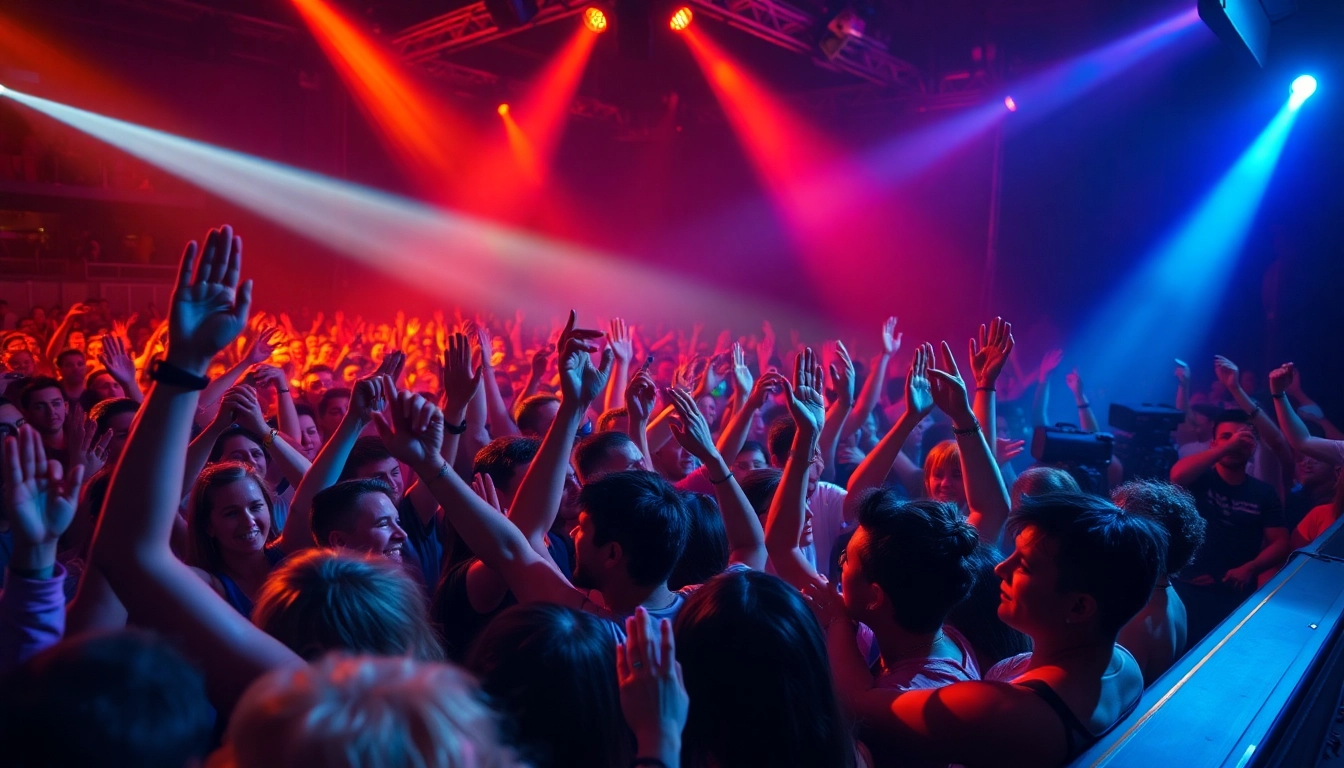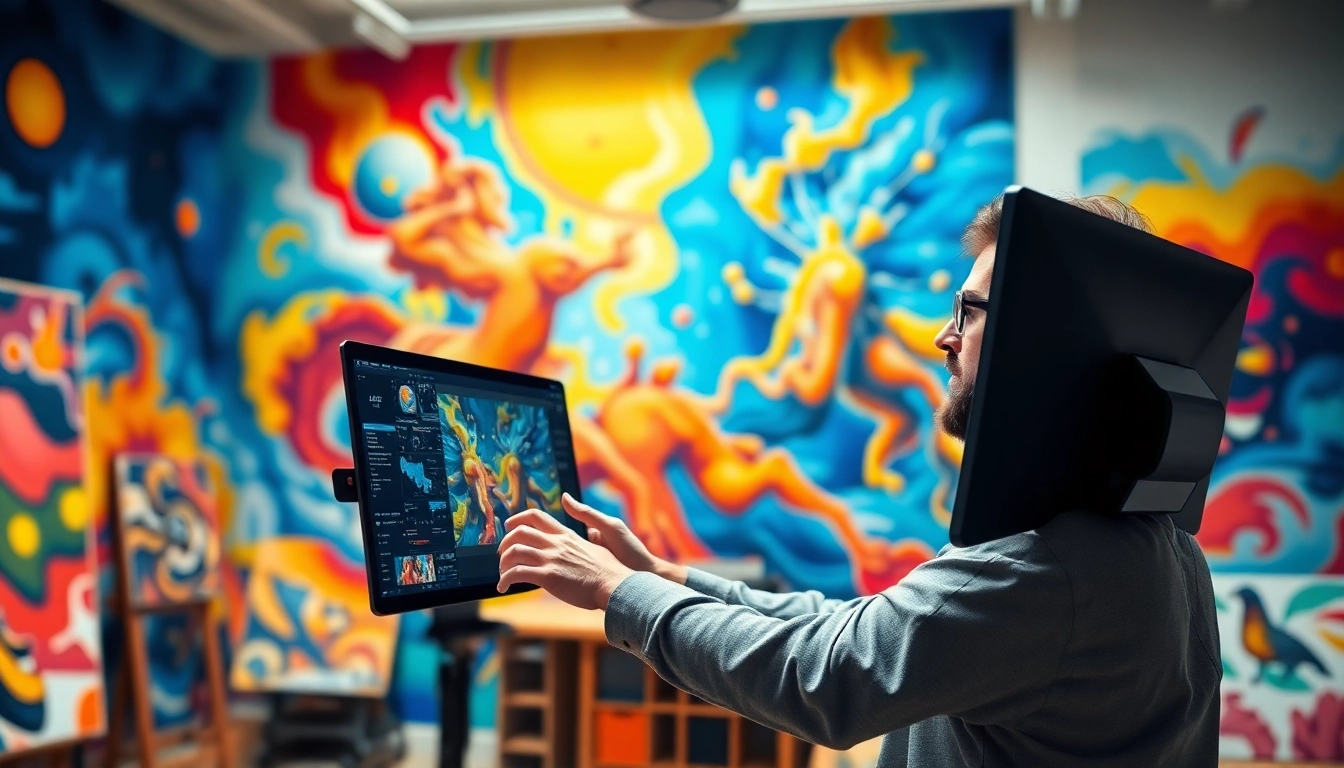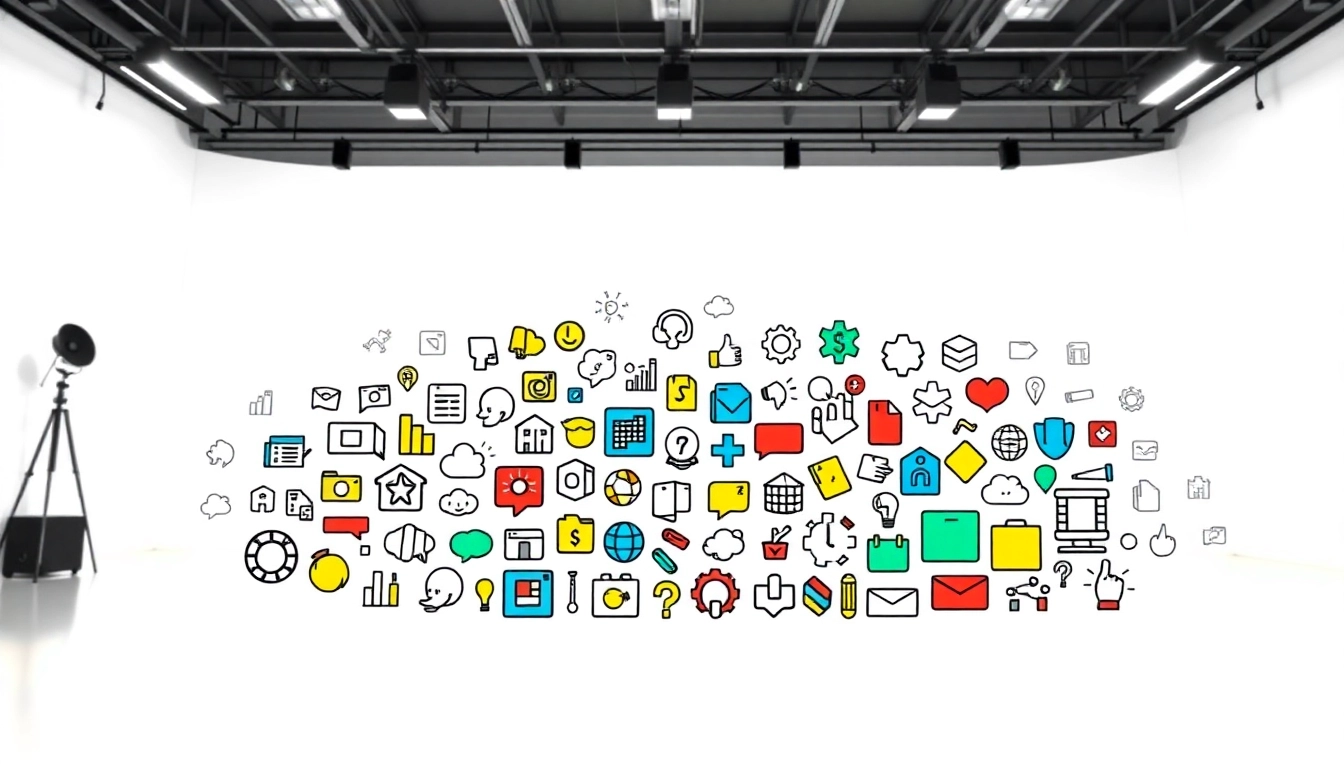Understanding the Pulse of Live Music Fans
In a world where streaming services dominate music consumption, the essence of live music remains alluringly unique. For many, the thrill of experiencing a performance in person evokes emotions that cannot be replicated through digital means. Live music fans are a passionate and diverse group, and understanding their characteristics is crucial for artists, event organizers, and brands looking to connect with them meaningfully. This article delves deep into who these fans are, why engaging with them is essential, and the broader economic implications of their live music experiences.
Who Are Live Music Fans?
Live music fans come in various shapes, sizes, and backgrounds, united by a common love for music. They can be categorized based on several factors, including their demographics, musical preferences, and concert-going behaviors. Understanding these distinctions is vital for creating tailored experiences that resonate with different segments of this audience.
- Demographics: Live music fans span a wide age range, from teenagers attending local gigs to older adults reliving their youth at classic rock concerts. This diversity plays a significant role in shaping their experiences and preferences.
- Musical Preferences: Fans often gravitate towards specific genres such as rock, pop, electronic, jazz, or indie music, influencing their choice of events. Each genre attracts different audiences, contributing to the rich tapestry of live music culture.
- Concert-going Behaviors: Some fans are casual attendees, while others are die-hard devotees who follow their favorite artists on tour. These behaviors help identify the levels of engagement and potential loyalty among different fan groups.
Why Engagement Matters for Live Music Fans
Engagement is the lifeblood of live music fandom. It amplifies the concert experience, fosters community, and creates lasting memories. Fans who feel engaged are more likely to participate in future events, support artists, and promote the music culture.
There are several reasons why engagement is paramount:
- Building Loyalty: Engaged fans often develop a sense of loyalty, not just to the artist but to the broader music scene. This loyalty leads to repeat attendance at concerts and a willingness to invest in merchandise and exclusive content.
- Creating Community: Engagement fosters a sense of belonging among fans. Shared experiences at concerts help cultivate friendships and networks, enhancing the overall music culture.
- Feedback Loop: Engaged fans provide valuable feedback, enabling artists and event organizers to refine their offerings. This iterative process enhances future experiences for everyone involved.
The Economics of Live Music Experiences for Fans
The impact of live music on local economies is significant. Concerts and events attract tourism, create jobs, and stimulate spending in various sectors, from hospitality to transportation. Understanding the economic factors at play helps stakeholders appreciate the value of fostering live music experiences.
Some economic effects include:
- Job Creation: Each concert generates numerous employment opportunities, from security personnel to event staff and local vendors.
- Tourist Attraction: Major live music events can draw visitors from far and wide, benefiting local businesses, hotels, and restaurants.
- Merchandise Sales: Fans often spend on merchandise, further enriching the experience for themselves while supporting their favorite artists.
Building Community Among Live Music Fans
Creating a thriving community among live music fans involves intentional strategies that foster interaction and connection. This can be achieved through various channels and approaches that prioritize fan safety, comfort, and engagement.
Creating Safe Spaces for Fan Interaction
Safety is paramount in any live music setting. Fans need to feel secure and welcome during events, allowing them to enjoy the experience fully. This means not only ensuring physical safety but also fostering an inclusive environment.
Some approaches include:
- Inclusive Policies: Event organizers should implement policies that embrace diversity and create a welcoming atmosphere for all fans.
- Safety Measures: Enhanced security, adequate lighting, and effective communication channels help ensure the physical safety of attendees.
- Support Networks: Creating support systems for vulnerable fan populations can enhance overall community cohesion at events.
Facilitating Online and Offline Engagement Opportunities
Today’s fans want multiple ways to connect. By providing both online platforms and offline events, organizers can enhance engagement and community-building efforts.
Potential avenues include:
- Social Media Groups: Creating dedicated spaces on platforms like Facebook or Discord allows fans to exchange experiences, share content, and remain connected between concerts.
- Meet-and-Greets: Organizing opportunities for fans to meet artists or industry insiders fosters deeper connections and emotional investment in the music.
- Fan-Led Events: Encouraging fans to host their own gatherings creates organic community experiences, further cementing loyalty to both the artist and the fandom.
Leveraging Social Media to Unite Live Music Fans
Social media has revolutionized how fans engage with music and one another. Platforms like Instagram, TikTok, and Twitter provide real-time communication channels that can enhance fan experiences.
Effective strategies include:
- Content Sharing: Encouraging fans to share their experiences, photos, and videos helps build a sense of community and excitement around events.
- Interactive Campaigns: Polls, contests, and Q&A sessions on social media can engage fans and encourage them to participate actively.
- Artist-Fan Interaction: When artists interact with fans through comments, likes, or live sessions, it fosters a connection that enhances fan loyalty.
Best Practices for Engaging Live Music Fans
Engagement is not merely about creating events; it requires thoughtful planning, execution, and feedback. Here’s how to effectively engage live music fans through best practices.
Optimizing Event Experiences for Maximum Enjoyment
The quality of the event experience can be a decisive factor in retaining fans. Organizers should focus on aspects that enhance enjoyment while ensuring logistical efficiency.
Consider the following:
- Sound and Production Quality: Prioritizing high-quality sound, lighting, and visuals creates a memorable experience for attendees.
- Access and Navigation: Ensuring easy access to venues, clear signage, and responsive staff can drastically improve fan experiences.
- Unique Offerings: Introducing elements such as themed sections, VIP experiences, or interactive installations can make events unforgettable.
Involving Fans in the Creative Process
Engagement is a two-way street. When fans are involved in the creative process, they feel a stronger connection to both the artist and the community. This can manifest in various ways:
- Feedback Mechanisms: Surveys and polls can gather fan opinions regarding setlists, merchandise, and event experiences, ensuring that their voices are heard.
- Crowdsourced Content: Encouraging fans to contribute ideas or media (like photos or stories) related to their concert experiences enriches the community narrative.
- Collaborative Projects: Inviting fans to participate in collaborations or special projects (such as music videos) boosts investment in the artist’s work.
Gathering Feedback to Improve Future Events
Collecting and acting on feedback is a critical component of fan engagement. Understanding what works and what doesn’t can significantly influence future planning.
Best practices for gathering feedback include:
- Post-Event Surveys: Distributing surveys right after the event can yield valuable insights into attendees’ experiences.
- Focus Groups: Assembling small groups of fans for in-depth discussions can provide qualitative data on preferences and suggestions.
- Engaging Social Media Feedback: Monitoring social media conversations can reveal spontaneous fan sentiments and emerging trends.
Utilizing Technology to Enhance Experiences for Live Music Fans
Technology plays an increasingly pivotal role in shaping how fans experience live music. From apps and platforms to innovative event practices, leveraging various technologies can lead to richer fan interactions.
Innovative Apps for Event Tracking and Fan Interaction
Mobile apps have transformed the concert-going experience. They provide fans with real-time information and facilitate engagement before, during, and after events.
Key features to consider include:
- Event Maps: Apps that provide detailed venue maps help attendees find their way easily, enhancing their comfort and enjoyment.
- Interactive Features: Functions like live chat, photo sharing, and voting for setlists can engage fans during the event itself.
- Personalized Recommendations: Apps that use data to suggest future events based on past attendance can increase fan engagement and loyalty.
Streaming and Virtual Events: Expanding Access for Fans
The rise of virtual concerts offers opportunities for fans who may not be able to attend live events due to distance or other constraints. Streaming can complement traditional events, offering a more inclusive experience.
Considerations for successful virtual events include:
- High-Quality Production: Investing in quality streaming equipment ensures that online viewers enjoy a professional experience.
- Interactive Elements: Features such as live chat, Q&A sessions, and social media integration can enhance viewer engagement and satisfaction.
- Accessible Content: Recording and arching performances provide fans with access to concerts they missed, fostering ongoing engagement.
Collecting Data to Understand Live Music Fan Preferences
Data collection is crucial for gaining insights into fan preferences and behaviors. This information can guide marketing efforts, event planning, and engagement strategies.
Effective data collection methods include:
- Analytics Tools: Utilizing website and social media analytics can reveal trends in fan engagement and sentiment.
- Ticket Purchase Insights: Analyzing data from ticket sales can indicate which demographics are most interested in specific events.
- Surveys and Feedback Forms: Implementing regular surveys can provide ongoing insights into fan preferences and areas for improvement.
Measuring Success in Engaging Live Music Fans
Success in engaging live music fans is multifaceted and should include qualitative and quantitative metrics. Evaluating engagement effectiveness entails a well-rounded approach to measuring outcomes.
Key Performance Indicators for Fan Engagement
Establishing clear Key Performance Indicators (KPIs) is essential for assessing fan engagement levels:
- Attendance Rates: Tracking ticket sales and attendance figures provides insight into overall engagement.
- Social Media Engagement: Measuring likes, shares, and comments can help gauge fan participation and enthusiasm online.
- Surveys Feedback Ratings: Analyzing the feedback collected through surveys can quantify audience satisfaction and areas needing attention.
Case Studies: Success Stories from the Live Music Industry
Examining case studies from successful live music events and campaigns highlights the importance of strategic engagement. Numerous artists and promoters have effectively enhanced fan experiences through innovative approaches:
- Glastonbury Festival: The festival’s commitment to sustainability has garnered a loyal following while setting a standard in the industry.
- Coachella’s Virtual Festival: Their successful transition to a virtual platform showcased how technology can enrich fan experiences while maximizing access.
- Beyoncé’s Lemonade Film Release: Through a well-executed album reveal, she involved her fan base in a larger conversation about race, identity, and femininity.
Future Trends in Live Music and Fan Engagement
The landscape of live music is constantly evolving, and staying ahead of the trends is crucial for effectively engaging with fans. Some emerging trends worth noting include:
- Hybrid Events: The future will likely see more hybrid fans, blending live experiences with virtual access, catering to both audiences effectively.
- AI-Driven Engagement: The use of AI to personalize experiences based on fan behavior promises to enhance connections and drive loyalty.
- Environmental Awareness: Fans increasingly favor artists and events that prioritize sustainability, highlighting the need for eco-friendly practices in the live music industry.
In conclusion, engaging with live music fans requires a detailed understanding of their needs, preferences, and behaviors. By adopting best practices, leveraging technology, and fostering a sense of community, artists and event organizers can create unforgettable experiences that resonate deeply within the hearts of their audience.



